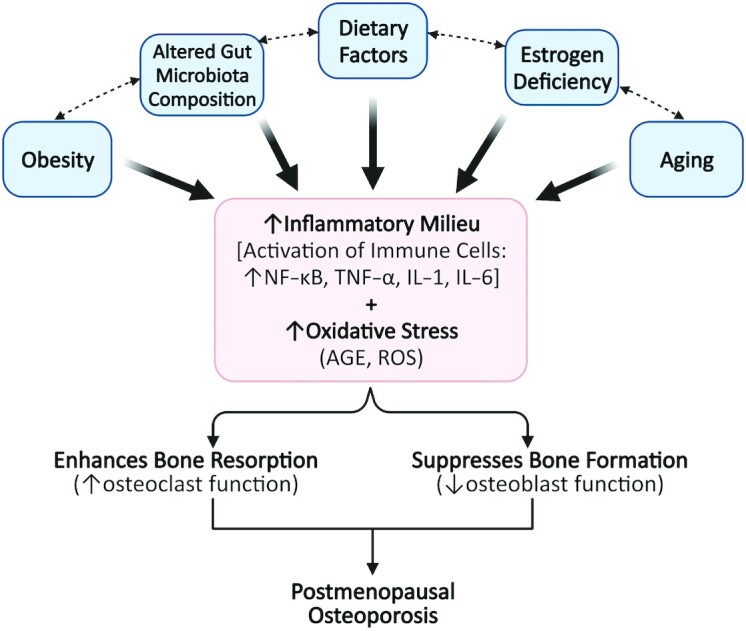FIGURE 2.

Factors contributing to an elevation in inflammation and oxidative stress, which may underlie postmenopausal osteoporosis. The pathogenesis of postmenopausal osteoporosis is attributed to several factors. Ovarian senescence during menopause results in estrogen deficiency, which is a potent stimulus for increased production of proinflammatory mediators and oxidative stress markers that promote bone loss. Aging is another factor that is associated with elevated inflammation and oxidative stress. The gut microbiome is emerging as an important modulator of the bone and immune system and the composition of the intestinal microbiota is affected by the diet, which is an important source of fiber and phytoestrogens. While these factors directly contribute to increased inflammation and oxidative stress (indicated by solid black lines), they also modulate one another (indicated by hashed lines). AGE, advanced glycation end products; ROS, reactive oxygen species.
